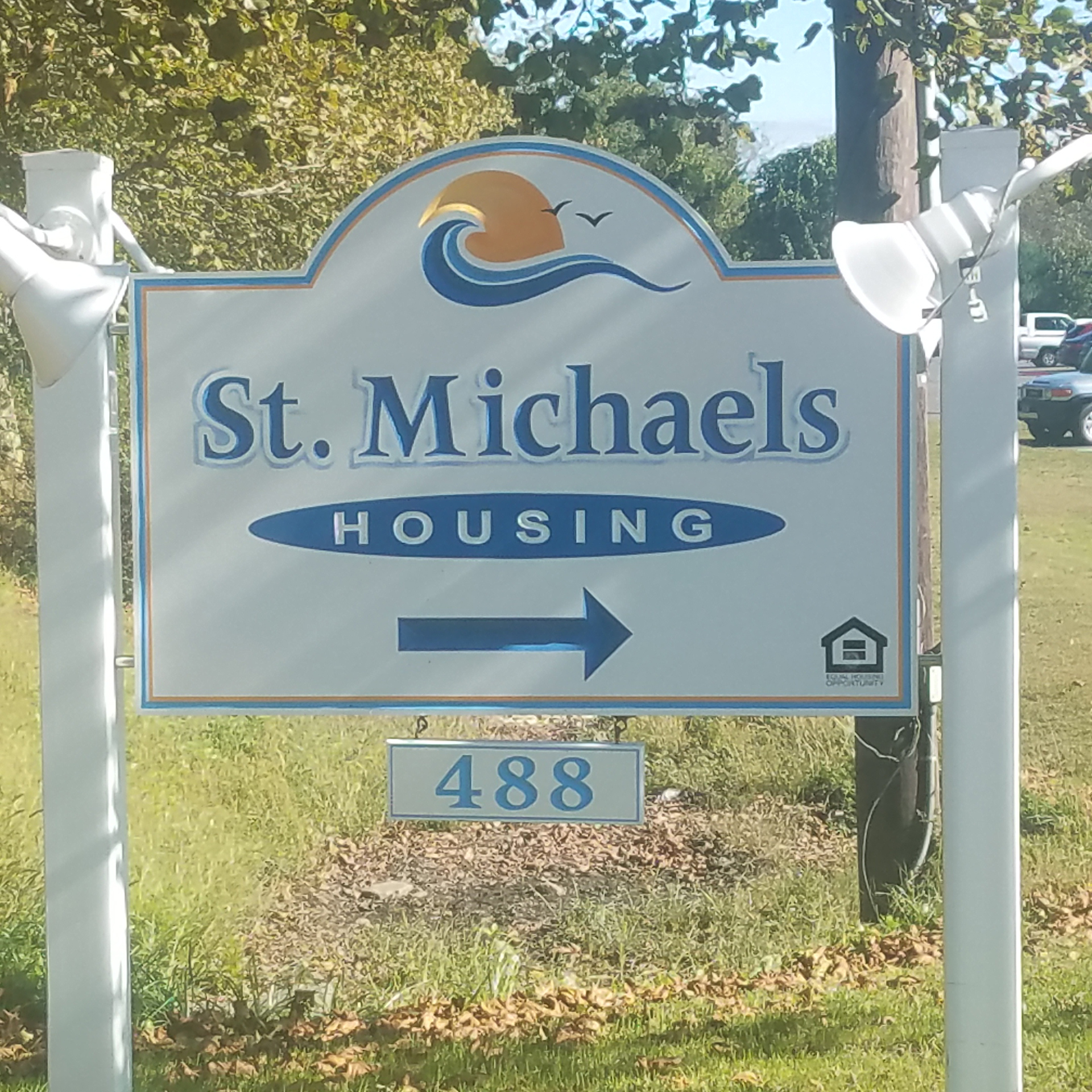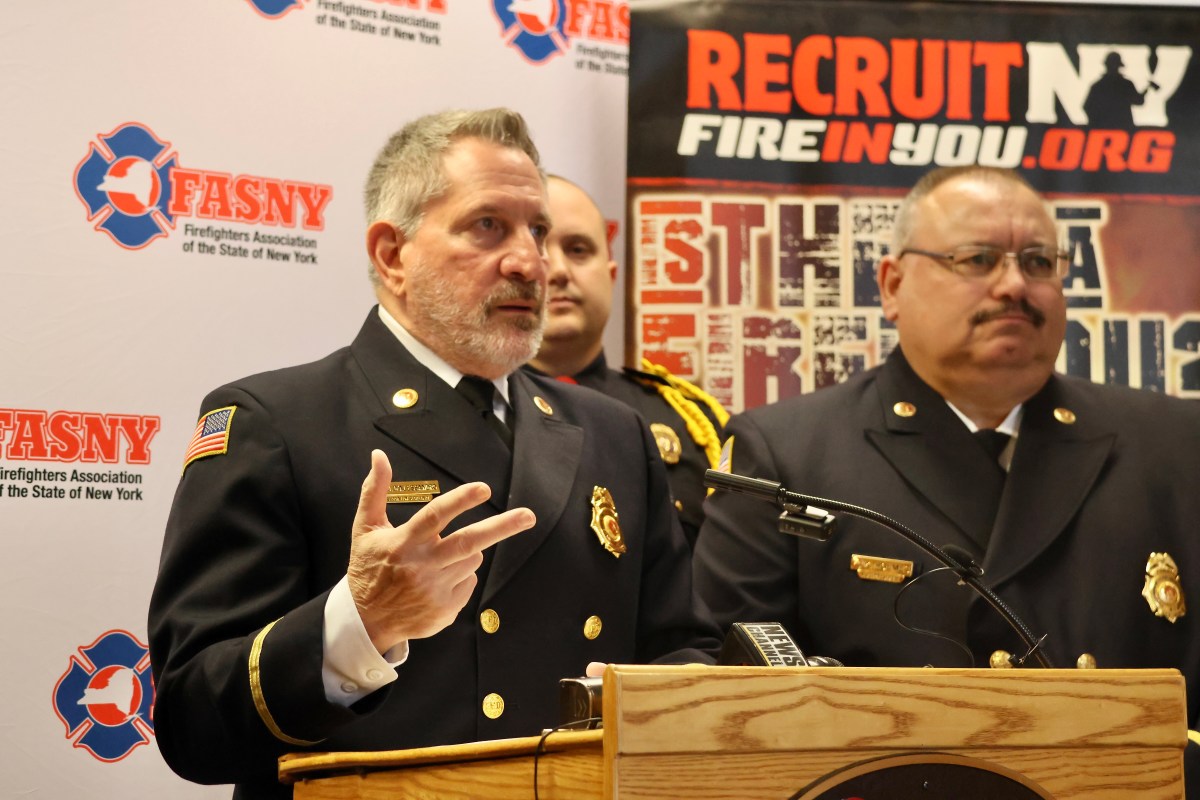Senior Housing Complex Or Penitentiary?

They are forced to clean their own hallways and stairwells, despite the fact many of the senior citizens are ill and or have heart issues or other disabling conditions. The staff is abusive to the point the residents are frightened. They have no representation at board meetings. One of the buildings was infested with cockroaches.
Those charges were leveled by a group of senior citizens who live in the St. Michaels senior citizen apartments in Amagansett and visited The Independent recently to voice their concerns. Staff members of the complex, though, disputed the allegations.
Building B, which houses eight units, is said to be overrun with roaches, and the tenants were warned in writing that they would be billed for pest extermination charges.
Tenants also said that the rules in their leases are unfairly stacked against them. The most onerous rule of all is one that states, “the landlord may terminate lease if there is activity” that the staff deems to be against the rules. One tenant, noting that renters are receiving federal rental subsidies because they have virtually no money or income, called the notice, “a death warrant” because the subsidies would end if they were forced to move.
Matt Stutterheim, a former radio station executive and a one time on-air personally, said he was stunned to get a notice on October 9. “Your apartment is not being maintained in a clean and sanitary manner,” the notice, labeled First Lease Violation, read. “The current state of your apartment creates a potential health or fire hazard. The landlord may terminate your lease.”
Roaches
The culprit? Cockroaches management found in his apartment. “They told me it was my books and I had to get rid of them,” said Stutterheim. Many of his belongings were bagged up, sealed, and taken from the premises, including valuables collected during his years in the broadcast business.
“They treat us like inmates,” one of the tenants interviewed said.
But Kathy Byrnes, the manager, who oversees four affordable senior complexes in town, including Windmill Village I and II, had a different take. “We’ve been very respectful to all the tenants,” she said in an interview on Friday, October 19. “I tell my staff, ‘Every day is a new day.’”
The outfit that runs the units is Windmill LLC, which landed in court a few years back after a stomach-churning mold and mildew problem made numerous residents sick.
Despite a checkered history, the Town of East Hampton continues to employ the same management team to run complexes built by Windmill: Gerry Mooney and Kathy Byrnes as the managers, and Brian Byrnes as the superintendent. In fact, the town recently irked more than a few insiders when the same group was hired to manage its newest affordable housing acquisition, the 114 Cottages just outside Sag Harbor Village.
Windmill I, Windmill II, and St. Michaels are run by Windmill Housing Development, a quasi-governmental organization that creates affordable housing opportunities for the town, which typically provides the land. It is run under the auspices of the East Hampton Town Office of Housing and Community Development, which is headed by Tom Ruhle, the East Hampton Town housing director and a town employee.
Ruhle said, via e-mail, that, “The Town of East Hampton does not have anything to do with the management of St. Michaels nor does the town provide any subsidy for the tenants located there. If the tenants have complaints with the management, they should address those with either the Windmill/St Michaels board or with HUD.”
Windmill LLC builds the complex and receives rent subsidies from the U.S. Department of Housing and Urban Development.
Tax Credits
There is money to be made: tax credits are sold to large financial institutions that put up the seed money to build the developments and are then repaid over a period of time, usually 20 years, with rent money.
The tax credits are often quite generous and the agent who sells them can net a commission. Windmill also controls the actual building process, hiring contractors, and the like with little or no oversight.
Windmill has been criticized for shoddy workmanship before, most recently when it was determined the mold at Windmill II was likely due to faulty gradient calculations and on-the-cheap basement egresses that allowed excess water into the basements.
Michael DeSario, the long-time president of the Windmill board and its driving force, is no longer on the board. The town, under Supervisor Larry Cantwell, passed over Windmill for a proposed project and decided to look for other affordable-housing providers.
A half-dozen Windmill II residents braved a driving snowstorm five years ago to come to The Independent office and complain about the treatment they receive. The scene repeated itself last Friday, when on October 12, residents of St. Michaels shared similar horror stories.
Kathy Byrnes, one woman said, can be abusive. “The other day she was standing over me screaming. I was afraid. She is a large woman, much larger than me,” recounted Pat Knight, a resident. “Thank God someone came by. I was afraid.”
“I’ve never yelled and screamed at anyone,” Byrnes countered.
Stutterheim, like all residents, has to be re-certified to keep his HUD subsidy. The problem is everything he owns is sealed in plastic, and much of it is stored outside. Now, he said, he doesn’t even know where the paperwork he needs is.
Devastating Blow
The Catch-22, as some tenants call it, appears in the lease: “If an apartment does not have problems with pests and they appear during a tenancy, the tenant is held responsible for exterminator charges.”
Since the building was new when tenants moved in, that technically means the management isn’t responsible.
For senior citizens living on fixed income, unforeseen expenses can be a devastating blow.
While the Windmill board was preparing to charge tenants for the cost of exterminators, it was also applying to HUD for a rent increase, from $1225 per basic unit to $1409 per month, an increase in $184.
But Byrnes said although the tenants were notified in writing they would have to pay for extermination services, they won’t have to after all.
Keith Kevan said he recently received his “second lease violation” notice, signed by Mooney. “You are in violation. The area in the basement has become a safety hazard,” the letter warned. “It was also reported you were verbally abusive and made derogatory comments about a staff member.”
Kevan said just the opposite occurred. He was complaining that the community room, which is supposed to be for use by the tenants, was being closed earlier and more often. “I am being harassed for that,” Kevan said. When he queried he was told, “It’s for security reasons.” More probable, one tenant groused, it was a convenience for the Byrnes, who are married: they live right above the room. That is not to say safety is not an issue. Every building is open, 24 hours a day. “Anyone can walk in,” one tenant said.
Incidentally, Mooney was accused of commandeering the community room at Windmill I and II and using it for personal gain — renting it out for private meetings. But the town took no action.
The business of keeping their own stairs and hallways clean rankles some residents of St. Michaels, noting the employees are paid almost $300,000. “We have maintenance, but we can’t get to it every week,” Byrnes said.
Food Pantry Ousted
Residents shared a litany of written rules they must follow: what hangs from windows, how late the TV can remain on, no satellite dishes, no barbecuing, etc. Residents complained staff would enter their apartments when they were not home. “That’s part of our job, to inspect them,” Byrnes said.
The Windmill board voted in 2016 with little notice to evict the East Hampton Food Pantry from Windmill II, where it used the community building one day a week and served over 300 families.
On another occasion, residents were proud they had established a small vegetable garden from a sandy stretch of land near the parking and were able to provide fresh produce for residents. The Windmill board had it removed, claiming it was drawing vermin to the property.
According to HUD guidelines, residents have the right to representation at board meetings and to form Resident Advisory Boards. At Windmill, an outspoken tenant representative, Joan Holden, was evicted after Ruhle told an arbitrator she didn’t live on the premises. Holden countered that the doctor advised her to move because she was ill from the mold. She sued, and her suit is currently pending.
A HUD regulation provides public housing residents with the right to organize and elect a residential council to represent their interests.
Stutterheim was told by Kathy Byrnes he could serve as tenant rep a year and a half ago, he said, but she has since reneged. “We don’t expect too much — clean common areas and decent housing,” he said. “Instead, they want us to mop the hallways for them.”
The St. Michaels Housing Board consists of Pat Bistrian, president, former police chiefs Ed Ecker (vice president) and Tom Scott, Pastor George Dietrich, Marge Harvey (secretary), and three revolving members. They are unpaid and do not take part in the day-to-day affairs of the complex.
rmurphy@indyeastend.com



